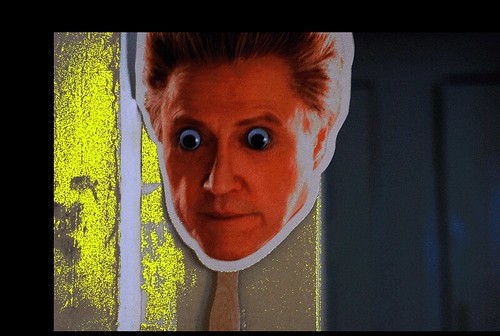Editor’s Note: While not directly correlated to knowledge sharing, GIFs do contribute to the “smart web” by creating a new way to communicate ideas, add dimensions to conversation, and provide irony and other editorial flavor. They say “a picture is worth a thousand words,” so how many words is a moving picture worth? List your favorite GIF in the comments!
GIFs have become the basic visual elements of choice for anyone posting images on the internet. Yet, GIFs, aka the “graphic interchange format,” have been evolving for 25 years. Today, the graphic format continues to evolve; it is now enabling more artists to create 3D moving images, while making it easier for everyday users to post a wide variety of graphics.
In Living Color
Image via Flickr by jabaij
Originally known as the 87a, the GIF was launched by Compuserve in 1987 to provide a standard color downloading portocol to replace their black-and-white images contained in the older RLE format. A more sophisticated version, the 89a, was introduced in 1989 that allowed application-specific metadata and transparent background colors. But Compuserve’s innovation was halted when Unisys claimed the compression protocols used by Compuserve were based on Unisy’s patent issued in 1985. A legal battle followed and the case was settled in 1994 when Unisys announced it would license the patent to commercial users.
This allowed Web developers to push their creative capabilities. By controlling a few images in one file linked with other instructions, it was possible to create basic animations by “looping” them together to simulate continuous motion. But the basic benefit was the enhanced color, including the use of a 256 color palette, displayed on a fixed-size logical screen. By 2012, the word “GIF” had become so popular that the Oxford University Press named it the word of the year.
Still Popular Today
Image via Flickr by Jose Antonio Cotallo Lopez
As a more primitive form of animation, GIFs remain popular today. There are scores of them being used on Tumblr and Facebook. Thanks to BlackBerry Q10’s redesigned web browser, you can load GIFs faster than ever. As primitive as it is, the GIF has even been raised to an art form. In 2012, Art Basel Miami Beach, a sister exhibition of the Art Basel art fair started in Switzerland in 1970. hosted an exhibit of 20 original pieces of GIF art. The works were celebrated for their abilities to combine new and old visual technologies into “an exceptionally intriguing medium.”
And due to their ability to isolate and re-create continuous video into stop-action modules, GIFs have found a new application in comedy. Stop-action GIFs now highlight the mistakes, double-takes, stumbles and other mis-steps that can be captured on camera in any situation worldwide.
The Future of GIFs
Image via Flickr by mendhak
From their origins as more sophisticated color palettes that allowed artists to replace black-and-white images, to their more primitive animation capabilities, GIFs have slowly, but steadily emerged as a flexible art form. In 2011, a fashion photographer invented the term “cinemagraph” to name the still photos, which had an animated element. By combining the best qualities of photographs with contrasting animated visuals, the resulting photo assumed new attractive qualities.
GIFs have also found a home in mobile video applications. This is especially attractive since mobile devices have become more popular than traditional cameras, but videos are more difficult to edit and upload. An appealing combination of the two mediums are animated GIFs.





GIFs are also great tools to include in marketing campaigns. They are interactive, catchy and funny; factors that gets people attention. Great post. 🙂
Lovely to have a post about art and history rather than more and more blathering about marketing. I actually read your whole post – something I seldom do these days.
I use png more often than gif or jpeg. But, gif files were great for making animated ASCII art cartoons.
well if you start the topic… would you explain why animated gifs are not working on scoop.it ?
Hi @clientjs:disqus : irony is we don’t support them as images are converted all images to jpeg on Scoop.it…
I thought it was just me – an article about gifs and none of the gifs on the page work. A note to the reader regarding this would have appreciated.